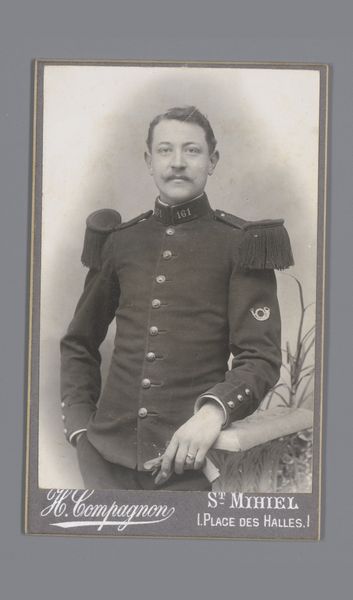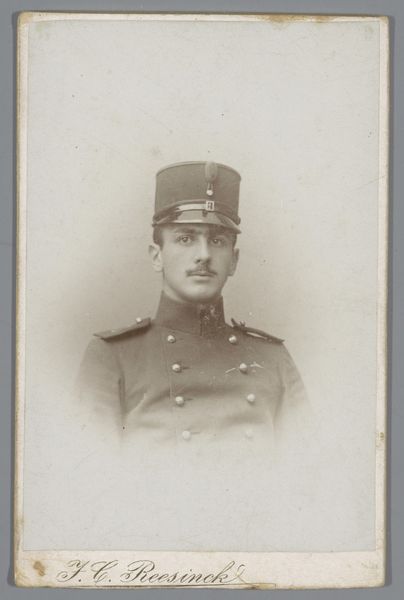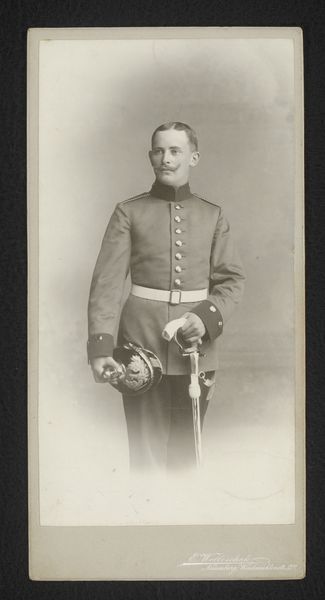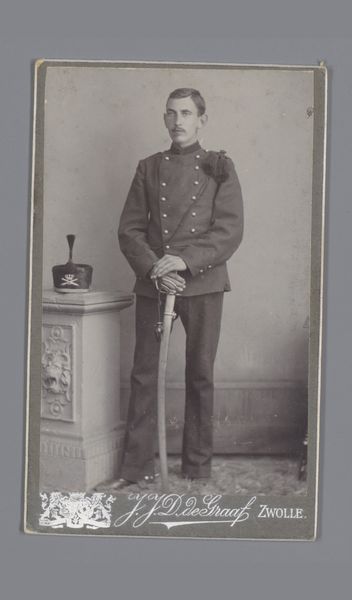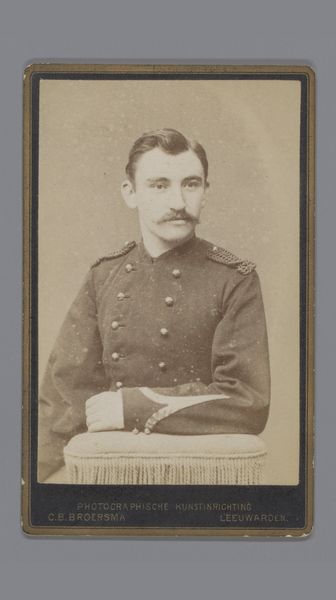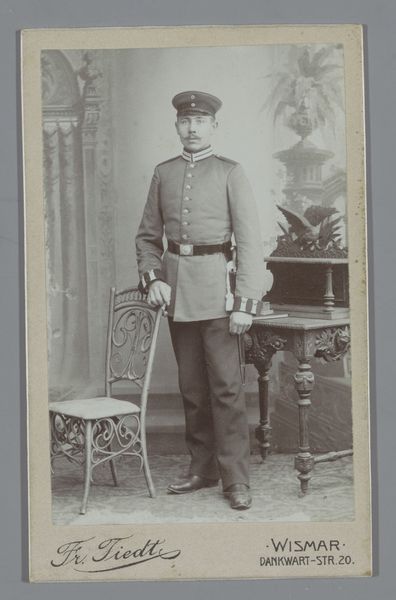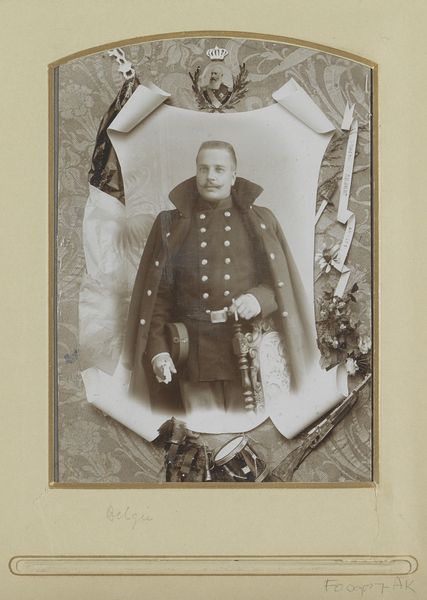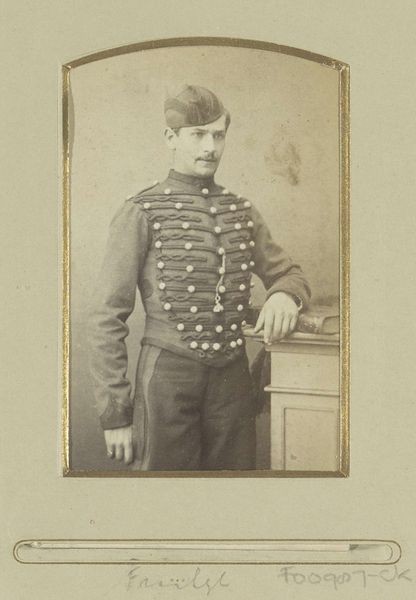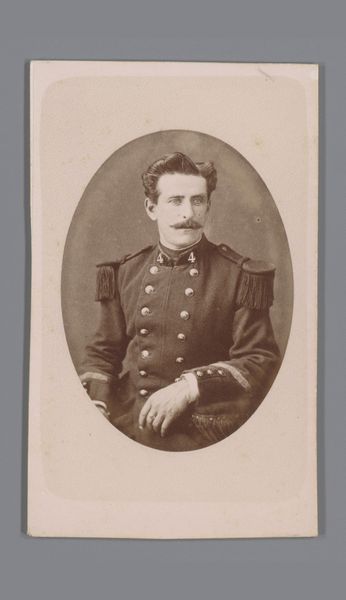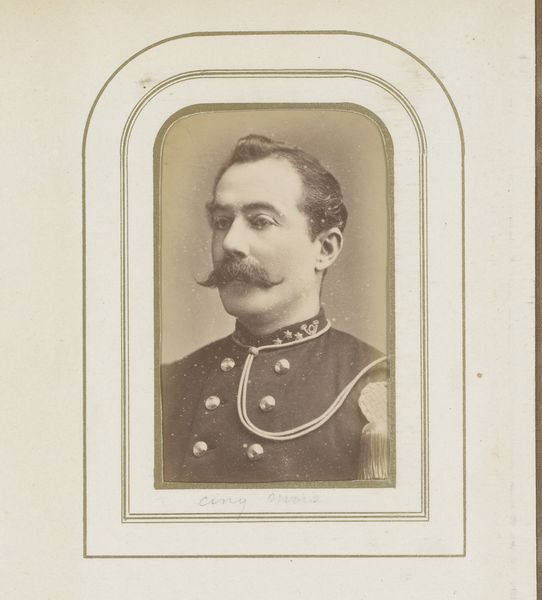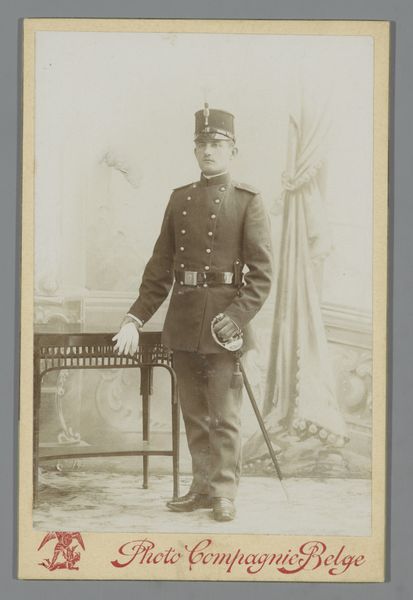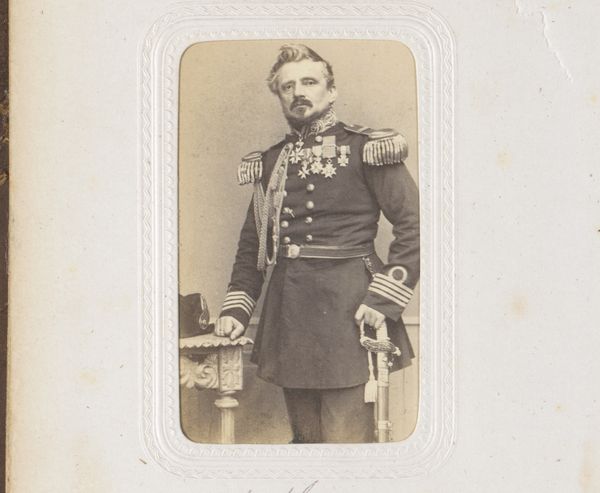
Portret van een onbekende jonge man in uniform, aangeduid als Paul Leray 1900 - 1914
0:00
0:00
Dimensions: height 104 mm, width 65 mm
Copyright: Rijks Museum: Open Domain
Curator: Standing before us is a captivating portrait of a young man in uniform, attributed to Ch. Coquins and believed to have been created sometime between 1900 and 1914. Editor: The sepia tones lend it a timeless, melancholic quality. It feels like a photograph carefully aged to perfection, evoking a specific moment in time, of restrained tension and a silent anticipation of events to come. Curator: Indeed. Consider the material processes here. This is not merely an image; it is a physical object, a card photograph produced and circulated within specific social circles. Notice the imprint of the photographer's name at the bottom—evidence of a small business, of labor and materials congealing in a commercial venture. Editor: Absolutely. I'm drawn to the symbolism of the uniform. The prominent number '31' on the collar likely signified his regiment or rank, conveying identity, allegiance, and perhaps even aspirations within the rigid structure of the military. He is carrying a letter too, tightly in his hand: this little item becomes loaded with hidden meaning about what matters to him and is kept secure and perhaps comforting in uncertain times. Curator: Precisely! The very act of commissioning such a portrait suggests a desire for social mobility, or at least, to visually solidify one's place within the military apparatus and its social web. Photography democratized portraiture, opening opportunities for broader participation and self-representation within visual culture, a new possibility and one that was increasingly in demand across European countries. Editor: And don't underestimate the power of clothing as a cultural signifier. The crisp lines of the jacket, the adorned epaulettes: all broadcasting coded messages about military status, personal identity and masculine ideals during the early twentieth century and hinting about both power but also of sacrifice. It is a very loaded piece of visual imagery to look upon through the vantage point of history. Curator: Yes, this uniform would have represented authority and discipline and possibly patriotism. Looking beyond the individual portrayed, consider the social functions these kinds of images were serving – remembrance, commemoration, assertion of identity. These mass-produced pictures speak of an industrialized system as much as of individuality. Editor: A single image opens up these questions of mass production that were shaping lives and minds in Europe. We must never underestimate that visual culture becomes intrinsically part of human consciousnesness through symbols, creating powerful and collective frameworks. The individual may appear frozen in sepia, yet its image still sparks vivid considerations for our memory, emotions, and intellect. Curator: It's a beautiful illustration of how everyday life becomes a carefully constructed social object with purpose and value, one small photograph capable of sparking expansive dialogues around material history and the human desire for self-expression.
Comments
No comments
Be the first to comment and join the conversation on the ultimate creative platform.
